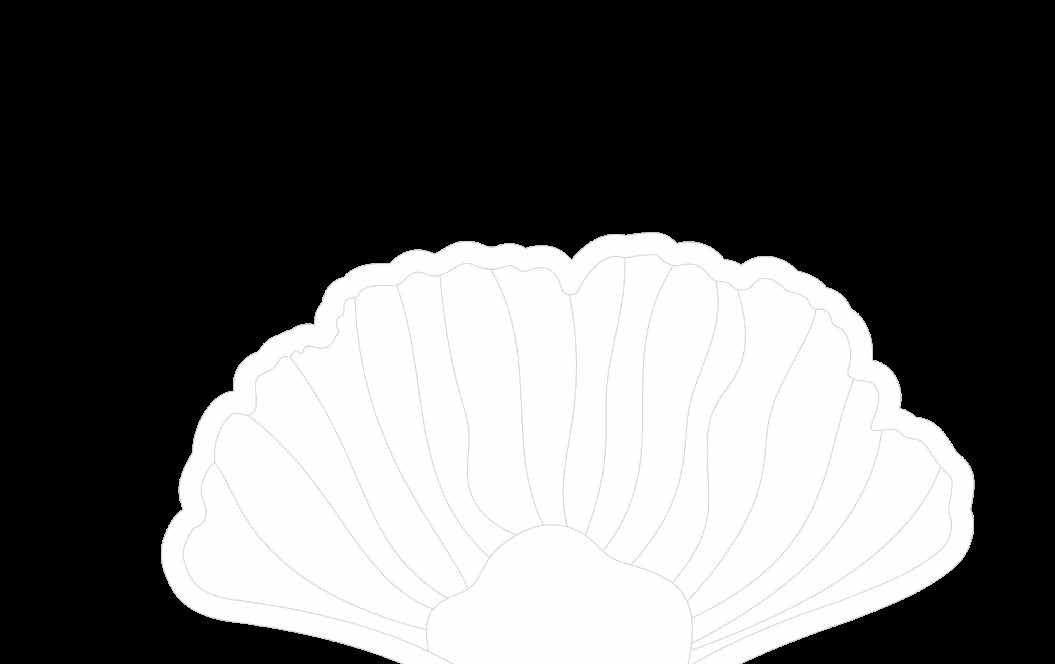
9 minute read
Intangible technologies
Consumer culture has unfortunately impacted on contemporary society in such a dramatic way that the term ‘technology’ conjures images of electronic devices and ‘gadgets’ in the minds of many. That is only partially true. A smartwatch for example is a technological device that is wearable, it represents a contemporary advancement of computing, electronics and manufacturing that permits the end consumer to wear a miniature computer for a range of purposes.
A garment on the other hand may seem commonplace, but is representative of thousands of years of learned skill, from the manipulation of natural fibre to the production of cloth on mechanical looms. It is unfortunately easy to forget that fabric creation and garment construction are not just technologies but highly integrated sets of technologies. For a modern human to wear a garment is to honour a continuous advancement of technologies from a time before recorded civilisation.
Advertisement
The watch or timepiece that preceded the smartwatch itself has a great history, Peter Henlein is credited as having made the leap from a stationary clock to a wearable device in the early 1500s. It was a rather large and heavy device by our standards but nevertheless it is wearable tech of the 16th century, and it is just as an important artefact as the microprocessor.
Wearable devices such as, sports and smartwatches, activity trackers, bluetooth earpods and more are seemingly ubiquitous devices and may be overlooked as meaningful objects. They are plentiful, but now also economically important. In 2019 the total number of consumer wearable devices is expected to reach 453 million units, with a total revenue of 42 billion dollars [1]. The largest proportion of wearable devices continues to be ear worn devices and the second largest category is smartwatches. What the consumer market demonstrates is that entertainment still remains the primary purpose of the majority of wearable devices, but wearable technology for healthcare is climbing rapidly and rightly so for inextricably human reasons.
The market success of wearable devices points to something in the human psyche that says we like things, and it is the materiality of the objects, garments and devices that we like. Deborah Lupton states that humans have always been using materials as technologies [2]. The technologies at our disposal are digital in nature but housed in material form. Boundaries of self, blur as the objects become lighter and smaller and even implanted, but were these boundaries blurred some time ago? Clothes are technologies. Roland Barthes writes “the structure of real clothing can only be technological, because of clothes embeddedness in technological production (their traces of the actions of manufacture) and their structural fabrication (textiles, seams, zippers etc) [3]”. Barthes argues that Clothes are material and therefore not language, but Umberto Eco writes that “Clothes are Semiotic devices, machines for communication [4]. Susan Ryan supports Eco’s semiotic defense of the garment and by extension the wearable device. She writes that the “complex language of dress engages with wearable device, which has in fact, always involved technology at some level. To wear technological advancements or devices is to advance the language of dress in specific ways that converge with the cultural dimensions of technology, and as a result to be culturally seen within a technologically literate environment [5]”.
We could not bear to be seen without our clothing. We choose particular fabrics and cut of garment for sensorial preference, and we make visual aesthetic choices for our body shape. We choose footwear because it can help us run faster, climb higher or support us well. Shoes for health and well-being are as technologically important as glucose monitors. This points to the meaning we are looking for in wearable technology, a good shoe, garment or activity tracker can do something for us. All of these objects have the potential to improve us to change us, and not just in a functional sense, they are aesthetically important to us as well. The sensory experience of what we wear can be haptic, visual, auditory and olfactory. The experience can also easily be multisensory. So wearable technology in all of its myriad forms can have meaning for us in a physiological sense but also in a psychological and even philosophical sense. The data that a device can gather and share is quantifiable, which permits the experience to be simultaneously sensory and intellectual. This is the greater issue that wearable technology brings. What can this new information that is private and sometimes public, do for us? If our boundaries with clothing
无形技术
不幸的是,消费文化以一种戏剧性的方式对当代社会产生了影响, 以至于“技术”一词在许多人的脑海中会唤起电子设备和“小工 具”的图像。这仅部分正确。例如,智能手表是一种可穿戴的技术 设备,代表了当代计算机信息处理技术、电子产品和制造业的发展 进步,使终端消费者在出于各种目的的情况下佩戴微型计算机成为 可能。
另一方面,服装可能看起来很平常,但它代表了数千年传承的技 能,包括从处理天然纤维到在机械织机上生产布料。不幸的是,人 们很容易忘记:织物的创造和服装的制作不仅是一门技术,而且是 综合性很高的技术。对于现代人来说,穿着服装表达了对(自有记 录的文明前到现在以来)技术不断进步的崇敬之情。
智能手表之前的手表或钟表具有悠久的历史,Peter Henlein被认为 在16世纪00年代创造了从固定时钟到可穿戴设备的飞跃。按照我们 的标准,那是一个相当巨大而且笨重的设备,然而,它属于16世纪 的可穿戴技术,并且是一件与微处理器同样重要的手工制品。
可穿戴设备(例如运动智能手表、活动追踪器、蓝牙耳机等)似乎 无处不在,但尽管是非常有意义的物品,却可能被忽视。它们数量 丰富,但目前在经济方面也很重要。2019年,消费类可穿戴设备的 总数量预计将达到4.53亿台,总收益达到420亿美元[1]。可穿戴设 备中比例最大的仍然是耳戴设备,第二大类别是智能手表。消费市 场表明,娱乐仍然是大多数可穿戴设备的主要用途,但是出于人类 不可抗力的原因,用于医疗保健的可穿戴技术正在迅速而合理地攀 升。
可穿戴设备在市场上的成功表明人类心智方面的某些事实:我们 喜欢某些物品,这是它们之所以重要的原因;我们喜欢服装和设 备。Deborah Lupton指出,人类一直在使用材料并将材料的使用 作为一门技术[2]。 我们掌握的技术本质上是数字化的,但是以物 质形式存在。自我的边界随着物体变轻、变小甚至被植入而变得 模糊。但这些边界是不是在不久前就变得模糊了?服装是技术层面 的。Roland Barthes写道:“由于服装根植于技术生产(服装中存 在制造活动的痕迹),以及服装的结构制造(纺织品、接缝、拉链 等),所以实际服装的制作只能是技术层面的[3]”。Barthes认为 服装是物质,因此不是语言。但Umberto Eco写道,“服装是符号设 备,是交流的机器[4]。”Susan Ryan支持Eco关于服装符号保护的 言论,并扩展了可穿戴设备的功能。她写道,“服装的复杂语言与 可穿戴设备结合在一起,实际上,这在某种程度上始终涉及技术。 穿戴技术进步或设备意味着以特定的方式提高着装语言,将技术的 各个文化维度融为一体,因此,在技术文化环境中被视为具有文化 意义[5]”。
我们无法忍受被人看到自己一丝不挂的样子。我们会根据感官偏好 选择特定的面料和服装剪裁方式,并根据自己的形体让衣物符合视 觉审美。我们选择穿鞋,是因为鞋能让我们跑得更快、爬得更高, 或者能为我们的双脚提供舒适的支撑。鞋子对于健康和幸福的作 用,从技术层面来讲,和血糖监测仪同样重要。这就体现出了我们 追求可穿戴式设备的意义,一双好的鞋子,一件舒适的衣服或一台 活动追踪器,它们都能为我们做些什么。 所有这些物品都具有提 升我们、改善我们的可能性,而且不仅仅是在功能上,它们的审 美意义对于我们也很重要。穿戴物品给我们带来的感官体验可以是 触觉的、视觉的、听觉的和嗅觉的。这种体验也可以很容易地被改 造为一种多感官体验。因此,各种样式的可穿戴技术对于我们不仅 有生理上的意义,而且也可以有心理上乃至哲学上的意义。一台设 备可收集和共享的数据是可以量化的,这就使这种体验可以同时具 有感觉和智能两方面的特性。这是可穿戴技术所引出的一个更大的 问题。这种新型的、私人的(有时是公共的)信息能为我们做什么 呢?如果我们与服装的边界在物质意义上延伸了我们的身体,那么 通过可穿戴设备共享的数据对我们的延伸则更为深远,它延伸到了 我们的家人和朋友,延伸到了跑步者团体,延伸到了医疗保健专业 人士,延伸到了跨国公司的营销部门。
Iztok Hrga 在她关于当前时尚背景下可穿戴设备的评论中写道,“ 服装代表的是视觉、身体和感知体验之间的一道桥梁[6]”, 它体现了 身体和周围环境之间的边界和联系。Hrga 认为可穿戴设备是嵌入到 衣物内的,而不像普通的消费者设备那样脱离衣物。Hrga 对可穿戴 设备进行了分类,依据的并不是它们“是什么”,而是它们能“做 什么”。她大致将其分为三个领域:物质、外部刺激和内部刺激 [7] ;这有助于结构化的符号分类。Eco 曾写到“我是在通过我的衣服说 话 [8]”,以及时尚是一种或一组影响交流的思想内涵的代码(Eco 在这里写他的衣服对于他的演讲起到了什么影响)。Eco 还写了服 装的现象学影响,它的“存在”被身体感知,以及将注意力强行集 中到外部举止上 [9]。Eco 在对一条新牛仔裤的影响进行思考后,发 现它迫使他将生活转向外部世界,同时降低了他的内在能力,亦即 思考能力。Eco 提醒我们,知识分子需要宽松的衣服,思想厌恶紧身 衣 [10]。
Intangible technologies
extends the body in a material sense, the data shared through wearable devices extends us in a far greater way, to our families and friends, to running groups and healthcare professionals, to the marketing departments of multinational companies.
Iztok Hrga in her review of current wearable technologies within the context of fashion writes that “Garments represent a bridge between visual, physical and perceptual experience [6]” and that they represent the frontier and the connection between the body and the environment around it. Hrga speaks of Wearable technology as embedded in clothing, not detached from it as consumer devices often are. Hrga writes of the categories of wearables, not insomuch as what they are, but described according to what they do. She categorises broadly into three areas, Material, External Stimuli and Internal Stimuli [7], and this is helpful in terms of structured semiotic categories. Eco writes “I am speaking through my clothes [8]”, and fashion is a code or set of codes that influence the ideological connotations of communication (Eco here writes of how his clothes affect his speech). Eco also writes of the phenomenological impact of clothing, of its ‘presence’ felt by the body, the imposition of attention focused on exterior demeanour [9]. Eco reflecting on the impact a pair of new jeans found that it obliged him to live toward the exterior world, whilst reducing his capacity for interiorness, in other words, thinking. Eco reminds us that intellectuals require loose clothing and that thought abhors tights [10].
The clothes and shoes we wear, the jewellery that adorns us, the technological devices that are attached to our wrists and ears and wherever else we choose to attach things, all communicate the materials they are made of, the stimuli that is internalised and the stimuli that is exteriorised.
Importantly our devices are also communicated to. Our devices can receive data from external sources from the banal to the significant. From a consumer perspective advertising targeted to us based on search preference and appearing in notifications on a smart watch begin to shape us in insidious ways. The same devices however can connect us with our loved ones through sight and sound or bring us stories and data that we can engage with in a meaningful way. Susan Ryan allows us to think of wearable technology in one of two ways, that “it is functional in application and potentially commercial in distribution, or that it is experimental and conceptual in nature to aid the awareness of embodiment [11]”.
This second point of Ryan’s is crucial to navigating the works in this exhibition. Wearable technology (inclusive of garments) deserves exploration, play and interrogation by artists and designers. The creative potential that wearable technology offers in facilitating a dialogue between people and through shared data or experience is where the new boundaries of meaning can be experienced. It is important that all technologies are explored critically, but playful investigation is often the best place to start and open source culture is evidence of that. Microprocessors such as the Arduino and Microbit and development platforms such as GitHub exemplify what any student, artist and designer can achieve by participating and contributing to a culture of shared information. This is important as it adds a new and experimental layer to a much older system of sharing knowledge, practices and skills. Unesco describes this as cultural heritage, tangible and intangible, meaning, passed down through oral tradition, performance craft and more [12]. There is nothing essentially different between a culture of microprocessor programmers and of traditional embroiderers from the Yao people, excepting a difference in material choice. What is interesting however is the dialogue resulting from the interactions of the time honoured, and newly emerging processes and technologies.
The works shown in this exhibition demonstrate the respect paid to traditional practices that emerged from a deep investigation and experimentation with materials. It is a playful engagement however with new technologies and conceptual ideals that can forge novel enquiries that question both old and new practices and give rise to new creative potentials.
It is at this juncture, the intersections of traditional practices and experimentations with technology where creativity emerges. These convergent spaces of divergent enquiries can give rise to new meanings, new ways to communicate, and new ways to tell stories.
无形技术
我们所穿的衣服,装饰的珠宝,手腕和耳朵上佩戴的技术设备,以 及身体其他部位所佩戴的东西,都在传达着它们的材料特征和不同 的内外部刺激。
值得注意的是,我们的设备也可以“被传达”信息。我们的设备可 以接收来自外部的数据,包括普通数据和重要数据。从消费者的角 度来看,那些智能手表上以通知形式出现,以我们的搜索偏好为依 据的广告,正在以一种“狡诈”的方式塑造着我们的生活。然而, 同样的设备也可以通过视觉和声音让我们和我们所爱之人产生联 系,或者给我们带来一些能让我们以有意义的方式参与的故事和数 据。 Susan Ryan 允许我们从两方面来考虑可穿戴技术,即“它在应 用上是功能性的,在分发上具有潜在的商业性,或者它在本质上是 实验性的和概念性的,目的是帮助人们将意识具象化 [11]”。
Ryan的第二个方面对于浏览本次展览的作品至关重要。可穿戴技术 (包括服装)值得艺术家和设计师探索、玩耍和审问。可穿戴技术 在促进人与人之间的对话以及通过共享数据或经验提供的创造潜力 是可以体验新意义界限的地方。认真研究所有技术很重要,但是有 趣的研究通常是最好的起点,而开源文化就是证明。诸如Arduino和 Microbit之类的微处理器以及诸如GitHub之类的开发平台体现了任 何学生、艺术家和设计师通过参与并促进共享信息文化所能实现的 目标。这一点很重要,因为它为更旧的共享知识、实践和技能的系 统增加了新的实验层。联合国教科文组织将其描述为有形和无形的 文化遗产,意思是,这是通过口头传统、表演手法等传递下来[12]。 微处理器编程人员的文化与瑶族传统绣花者的文化没有本质上的区 别,只是在材质选择上有所不同。然而有趣的是,对话是由悠久的 时代与新出现的过程和技术之间的相互作用引起的。

这次展览中展示的作品展示了对传统实践的尊重,这些传统实 践是通过对材料的深入研究和实验而产生的。然而,这与新技 术和概念理想是一种有趣的互动,可以形成新颖的探究,质疑 新旧做法,并产生新的创造潜力。正是在这一关头,传统实践 与技术的实验相交,才出现了创造力。这些不同探究领域的融 合可以产生新的含义、新的交流方式和讲故事的新方式。
Daniel Della-Bosca 2019
[1] Costello Katie, 2018, Gartner press release, available at; https://www.gartner.com/en/ newsroom/press-releases/2018-11-29-gartnersays-worldwide-wearable-device-sales-to-grow-
[2] Lupton Deborah, 2014, Self-tracking cultures: towards a sociology of personal informatics, doi: 10.1145/2686612.2686623
[3] Barthes Roland, 1967, Système de la mode, Paris, Éditions du Seuil
[4] Eco Umberto, 1973, Social Life as a Sign System in David Robey (ed.) Structuralism: An introduction, Oxford, Clarendon Press
[5] Ryan Susan Elisabeth, 2014, Garments of Paradise: Wearable Discourse in the Digital Age, Cambridge, Massachusetts, The MIT Press
[6] Hrga Iztok, 2019, Wearable Technologies: Between Fashion, Art, Performance, and Science (Fiction), Tekstilec, 62/2, 124-136
[7] Hrga Iztok, 2019
[8] Eco Umberto, 1973
[9] Eco Umberto, 1986, Lumbar Thought, in Travels in Hyper-reality, Orlando, FL: Harcourt, Brace, Jovanovich, 192 – 194
[10] Eco Umberto, 1986
[11] Ryan Susan Elisabeth, 2014
[12] https://ich.unesco.org/en/whatis-intangible-heritage-00003
Intangible technologies
Daniel Della-Bosca 2019
[1] Costello Katie, 2018, Gartner新闻稿,网 址:https://www.gartner.com/en/newsroom/ press-releases/2018-11-29-gartner-saysworldwide-wearable-device-sales-to-grow-
[2] Lupton Deborah, 2014,自我跟踪文化:走向个 人信息社会学,doi: 10.1145/2686612.2686623
[3] Barthes Roland, 1967, Système de la mode, Paris, Éditions du Seuil
[4] Eco Umberto, 1973, David Robey(编者)结构主义 中的“社会生活即标志系统”:简介, Oxford, Clarendon Press
[5] Ryan Susan Elisabeth, 2014, 天堂服 装:数字时代的可穿戴性话语,剑桥, 马萨诸塞州,麻省理工学院出版社
[5] Hrga Iztok, 2019, 可穿戴技术:在时尚、艺术、 表演和科学之间(小说), Tekstilec, 62/2, 124-136
[6] Hrga Iztok, 2019
[7] Eco Umberto, 1973
[8] Eco Umberto, 1986,腰部思想,超现实旅行,佛罗里 达州奥兰多:Harcourt, Brace, Jovanovich, 192 – 194
[9] Eco Umberto, 1986

[10] Ryan Susan Elisabeth, 2014
[11] https://ich.unesco.org/en/whatis-intangible-heritage-00003




